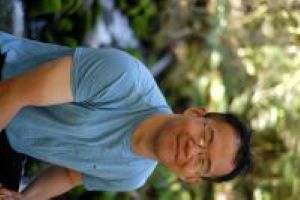Research
Contact
Communications Specialist
Faculty of Engineering
Spencer Engineering Building
Room 2072
Western University
Tel: 519-661-2111 ext. 87015
Email: engineeringcomms@uwo.ca
The Engineer's Impact - Bing Li
Your inside look at faculty’s research and its effect on society
In this new Q&A series, we’ll feature Western Engineering faculty members to gain a succinct overview of their research, understand its impact on society, and discover intriguing little-known facts.
Meet Civil and Environmental Engineering Assistant Professor Bing Li.
Can you describe your research?
My research group is interested in characterising and monitoring geological energy applications such as enhanced geothermal systems, carbon sequestration, nuclear waste storage, hydroelectric reservoirs, and mining, as well as natural settings such as volcanoes. The phenomena are investigated using data-driven and numerical modelling approaches at the field and laboratory scales.
How does your research impact society in everyday life?
Sustainable energy solutions are required to transition us to a carbon-neutral economy. Many of these solutions involve significant elements of engineering geology and rock mechanics. For example, hydroelectric dams must be monitored to ensure that the concrete dam is securely attached to the underlying rock, or underground nuclear waste storage sites must be well-characterised to ensure no waste leakage can occur. My group develops technologies that helps us to better understand the conditions in these hard-to-reach structures.
What’s an interesting, little-known fact related to your research?
From the USGS (United States Geological Survey): “Human beings can detect sounds in the frequency range 20-20,000 Hertz. If a P wave refracts out of the rock surface into the air, and it has a frequency in the audible range, it will be heard as a rumble. Most earthquake waves have a frequency of less than 20 Hz, so the waves themselves are usually not heard. Most of the rumbling noise heard during an earthquake is from buildings and their contents moving.”

